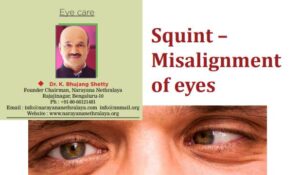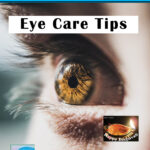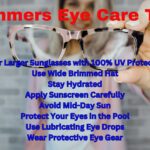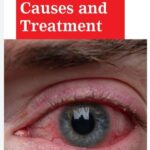Squint or Misalignment of eyes is one of the common eye problems seen in children where each eye points in different directions. Is it a cosmetic issue or a serious eye condition?


Squint is said to occur when there is misalignment of the eyes and each eye points in different directions. One of the eyes may be turned inwards, outwards or upwards or downwards. Normally both eyes are perfectly aligned and they point in the same direction. Squint is one of the common eye problems seen in children and must be treated on emergency basis as it may lead to amblyopia or lazy eye and decreased stereovision (3D vision) if left untreated. Squint can occur in childhood or later in adulthood. But there are plenty of differences between squint in a child and an adult. The most important difference being squinting in children can lead to decrease in vision in the squinting eye (LAZY EYE or AMBLYOPIA)
Causes of Squint
The eye has muscles attached on its surface which moves it in different directions. An imbalance in the function of these muscles may lead to squint. This imbalance may occur spontaneously or following an eye disease, injury or a systemic disease which may affect the muscle directly or the nerves that supply these muscles.
Squinting in children develops spontaneously or due to eye diseases like refractive errors, cataract or even rarely neurological diseases.
Squinting in adults on other hand occurs as a result of nerve damage due to injury, systemic diseases like Diabetes or neurological diseases.
Evaluation of Squint
The team of paediatric ophthalmologists and optometrists conduct a detailed evaluation of squint to arrive at an accurate diagnosis and provide appropriate and complete treatment. A thorough evaluation of squint is done with appropriate tests which may include the following:
- Vision
- Spectacle power
- Slit lamp examination
- Retina examination
- Squint examination – including tests for measurement of squint, stereovision and tests for suppression
- Orthoptic evaluation
- Diplopia charting
- HESS charting
- Prism trial
- Neuro-ophthalmologist consultation
- Paediatric neurologist/ neurologist consultation
If indicated your doctor may also request for a neurologist’s opinion or ask for brain imaging (MRI / CT Brain) to rule out a brain disease.
Treatment of Squint
The most vital part of squint treatment in children is correction of amblyopia or lazy eye. Lazy eye is treated either by occlusion or patching therapy in which the better eye is patched so that child sees more with the squinting eye and the vision improves. Lazy eye can also be treated by making the vision in the stronger eye blur either with eye drops (penalization) or fogged glasses
Based on the cause, the type of squint and its severity, we may either choose to treat it with
- Glasses
- Exercises
- Surgery – surgery may be done on muscles in one eye or both eyes
- Prisms/ occlusion (to avoid diplopia in adults)
- Treating the cause (underlying neurological problem)
Squint surgery involves adjusting the position of muscles or shortening the muscles and reattaching them to the surface of the eye. After squint surgery you will require to continue patching therapy and to continue the use of glasses as advised by your pediatric eye specialist. We have a dedicated team of Squint specialists / Strabismologists who are capable of diagnosing and treating all types of squint and associated problems.


Dr. Bhujang Shetty – Chairman
Narayana Nethralaya
121/C , 1st ‘R’ Block, Chord Road
Rajaji Nagar
Bangalore – 560010
Ph: o8o-6612 1401-1402











